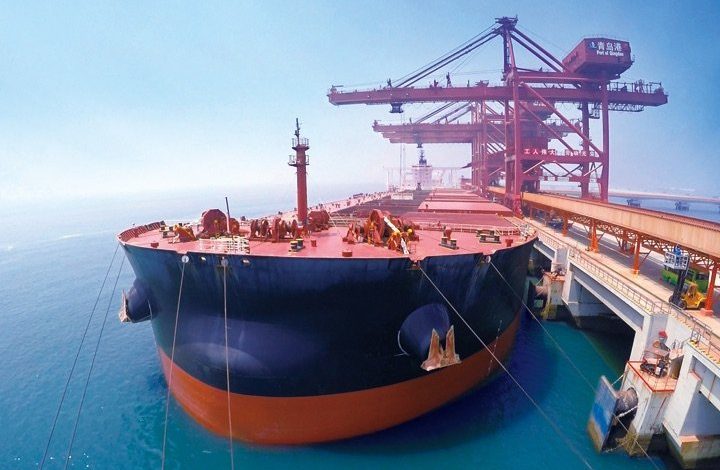Chinese commodity demand soars back

The dragon is back, firing on all cylinders, giving hope to anyone involved in the shipping of commodities to the country with the largest population in the world.
China, shorn of the shackles of covid finally, has provided plenty of hugely encouraging data points for tanker and dry bulk owners this week.
Gross domestic product expanded 4.5% in the January-to-March period from a year prior, data released by the National Bureau of Statistics showed earlier this week, beating analyst expectations as a rebound in consumer spending and a ramping up in government infrastructure investment helped to boost growth in the first quarter.
“China’s economic recovery is widely expected to gather momentum in earnest during the current quarter,” analysts at chartering platform Shipfix suggested, a point of view shared with many of the biggest names in banking.
On the back of the better than expected Q1 performance JPMorgan raised its 2023 China growth outlook to 6.4%, up from a previous forecast of 6%, while Citi raised its forecast to 6.1% from its previous forecast of 5.7%, saying the Chinese economy is “well on track on its post-Covid recovery led by consumption and services”.
“Both China’s consumer sector and industrial sector continue to improve dramatically this year,” stated the latest report from Commodore Research, an American dry bulk research outfit with a strong focus on the People’s Republic.
The strong Q1 also boosted the oil demand outlook. The International Energy Agency has stated that China represents most of the projected 2023 global oil demand increase.
Chinese refiners processed record high volumes of crude in March ahead of refinery maintenance.
Monthly data released earlier this week from China’s National Bureau of Statistics was very encouraging for oil traders.
“Never in history have Chinese refiners processed so much crude oil into petroleum products as they did in March. Chinese refinery throughput reached 63.9 million tons, or about 15.1 million barrels per day, widely eclipsing all previous records,” a recent report from Norwegian brokers Lorentzen & Co observed.
For dry bulk, the World Steel Association’s latest Short Range Outlook is also optimistic regarding China.
After two years of contraction, Chinese steel demand is poised to return to growth this year, the association is forecasting.
According to data from shipping platform Sea/ Chinese iron ore imports in Q1 were the highest recorded in the 2020s to date.
“China’s re-opening has had a positive impact on steel demand and iron ore imports,” analysts at Jefferies noted this week.
Other dry bulk commodities are making headlines too. Newly released customs data out of China shows the country imported 41.2m tonnes of coal in March, rising from just 16.4m tonnes in March of last year.
Data from Sea/ shows Q1 coal imports were up by nearly 40% year-on-year.
“The surge can be attributed to both the rise in electricity generation as well as rising steel production as the country continues its rebound post-pandemic,” brokers Braemar suggested this week.
In grains too the Chinese returning appetite is noticeable. The US Department of Agriculture has just increased its forecast of Chinese wheat imports in the 2022/23 marketing year by 2m tonnes to 12m tonnes, the highest total since 1995/96.
According to AXS vessel tracking, 1.1m tonnes of grain was exported from Australia to China in March, almost doubling year-on-year, according to Braemar.
Port callings into China for the tanker and dry bulk segment, as tracked by Sea/ , have been notably higher this year compared to 2022, backing up the overall data pointing towards an economy bouncing back.
Speaking with Splash yesterday on the sidelines of a Hong Kong Shipowners Association lunch where he was the guest of honour speaker, Jian Jun Wang, head of business development at Oneglobal Broking Hong Kong, said China’s GDP growth will be much better than the 3% recorded in 2022.
“China imports about 70% of global dry cargo, and China’s improved economy will help dry demand grow,” said Wang, a former China analyst with Maritime Strategies International.
